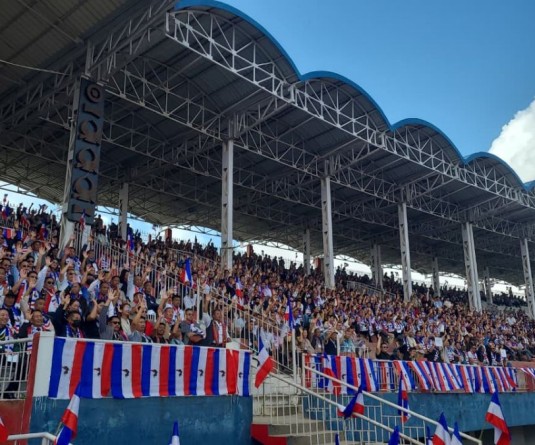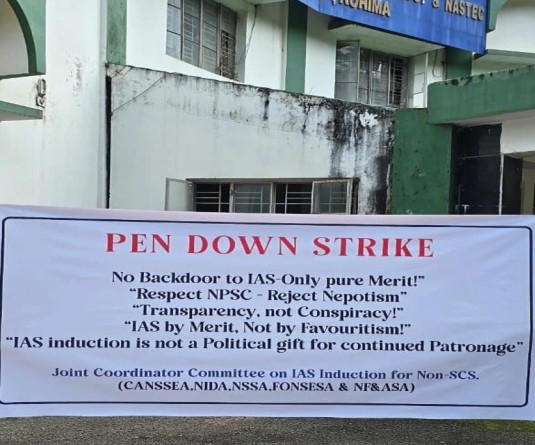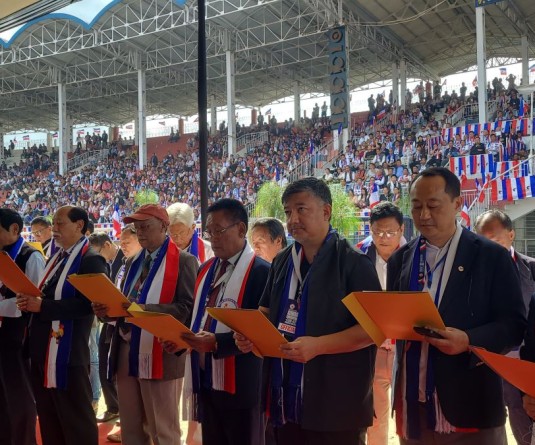
Ashikho Pfuzhe
Morung Express News | July 30
Chief Angh (king) of Chi village, Wangkhao, who passed away on July 17 last at the age of 86, would perhaps be best remembered not for his exploits as a warrior or even for the many wives he kept but as a king who tried to keep pace with the changing times. A strong proponent of change, late Wangkhao is attributed to having reformed the traditional angh system making it conducive to modern social setups. He also donated half of the land on which present Mon town stands and in recognition of his magnanimity, the government college in Mon town is named after him.
One of the six chief anghs among the Konyak spread out in Nagaland, Arunachal Pradesh and Myanmar, Wangkhao took over the throne of the angh in 1961 and ruled over 36 villages for 48 years. In 1996, the angh decided to embrace Christianity and was baptized on July 7, 1996. “Christianity has come to stay so adopt it, be God-fearing. Walk in the new path and catch up with the changing world,” the tattooed angh had explained on his conversion to the new faith to visiting journalists last year.
Cloistered in his home, the angh who understood well the Naga predicament had then remarked, “Nagas are one, there is no two Nagas.” An advocate of peace, Wangkhao was also instrumental in the 1964 ceasefire agreement between the Government of India and the Naga rebels. Chi villagers recall the standoff at Chi village between the rival NSCN factions in 2004, where the angh exercised his authority and displayed “supernatural powers” to avert an imminent clash between the two groups. Wangkhao is said to have stood on the sacred stone slab outside his house, looked up to the heavens and cried out, “In my time don’t let bloodshed flow in my village; don’t tarnish my image.”
“Right after the angh uttered these words, thunderstorm accompanied by heavy winds descended on the village and the underground cadres were forced to vacate the village,” a village elder said. A keen believer in the youth, the chief angh also graced students’ conferences on many occasions including the NSF conference in Mokokchung in the early eighties.
The rich tribute from all walks of life to the departed angh, who was laid to rest on July 18 near the grave of his first queen Lihkhao Angya, speaks volumes of the legacy he left behind. Chief Minister Neiphiu Rio in his condolence message said late Wangkhao was a prominent personality of the state who left behind an indelible mark in “our social structure for his contributions to the society.”
Maharashtra Governor SC Jamir expressed the desire that the angh’s son and heir would follow the illustrious footsteps of his late father and ensure that peace and harmony prevailed in the region. A delegation of the Naga Students’ Federation led by its president Mutsikhoyo Yhobu and tribunal general and former NSF president Imchatoba Imchen also paid a visit to Chi village on July 22 and paid tributes to late angh Wangkhao.
Talking to villagers, both Mutsikhoyo and Imchatoba acknowledged the concern shown by the angh for the welfare of the Nagas. Describing his demise as a great loss for the society, the NSF delegation expressed confidence that the village and the new angh would continue to uphold the tradition and legacy left behind by the chief angh. Talking to this correspondent four days after Wangkhao was laid to rest, 60-year-old Mongyin, the youngest surviving wife of the late Angh said, “He has left us but his good deeds will remain.”






